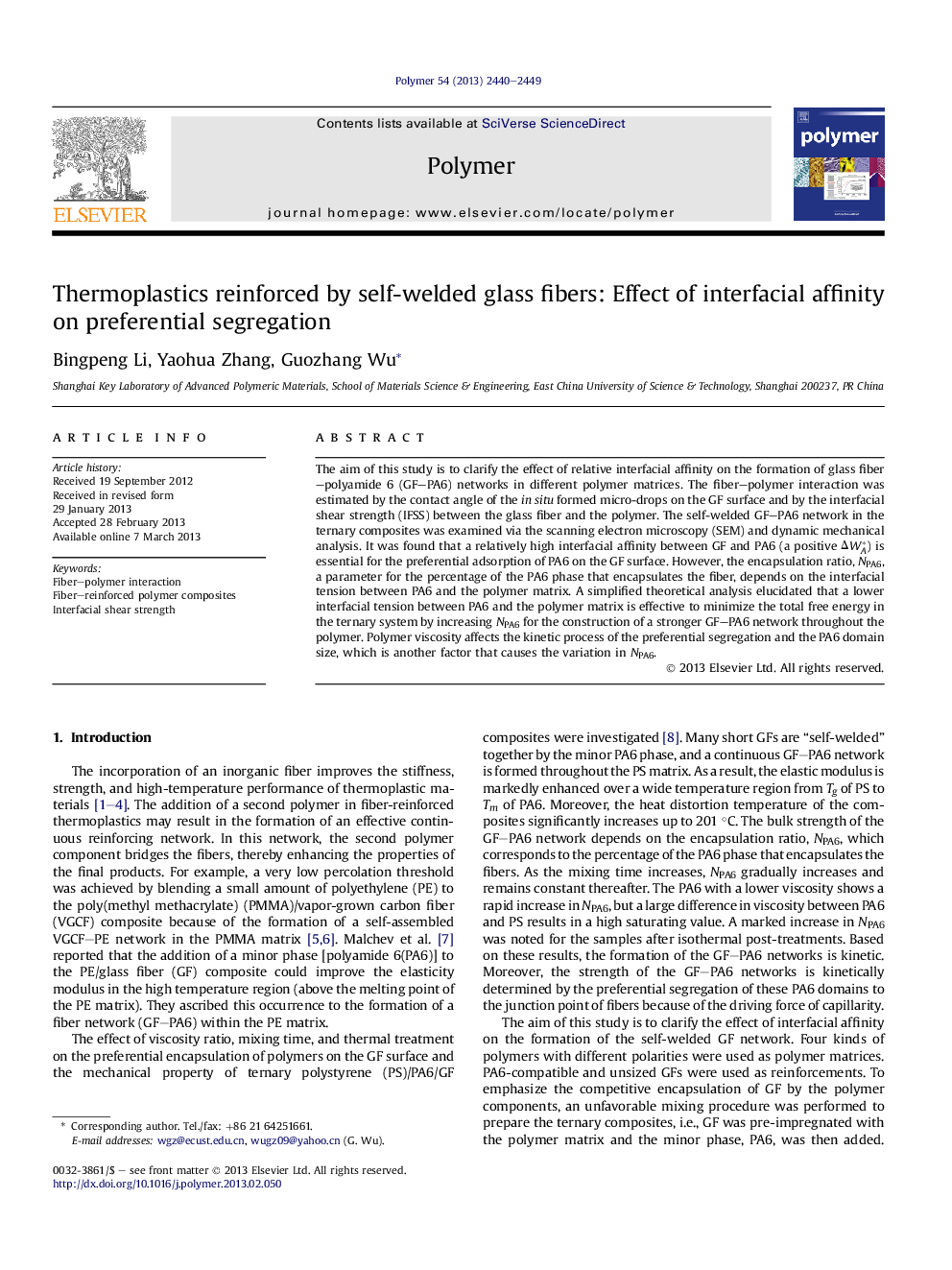| Article ID | Journal | Published Year | Pages | File Type |
|---|---|---|---|---|
| 5181759 | Polymer | 2013 | 10 Pages |
The aim of this study is to clarify the effect of relative interfacial affinity on the formation of glass fiber-polyamide 6 (GF-PA6) networks in different polymer matrices. The fiber-polymer interaction was estimated by the contact angle of the in situ formed micro-drops on the GF surface and by the interfacial shear strength (IFSS) between the glass fiber and the polymer. The self-welded GF-PA6 network in the ternary composites was examined via the scanning electron microscopy (SEM) and dynamic mechanical analysis. It was found that a relatively high interfacial affinity between GF and PA6 (a positive ÎWA*) is essential for the preferential adsorption of PA6 on the GF surface. However, the encapsulation ratio, NPA6, a parameter for the percentage of the PA6 phase that encapsulates the fiber, depends on the interfacial tension between PA6 and the polymer matrix. A simplified theoretical analysis elucidated that a lower interfacial tension between PA6 and the polymer matrix is effective to minimize the total free energy in the ternary system by increasing NPA6 for the construction of a stronger GF-PA6 network throughout the polymer. Polymer viscosity affects the kinetic process of the preferential segregation and the PA6 domain size, which is another factor that causes the variation in NPA6.
Graphical abstractDownload full-size image
